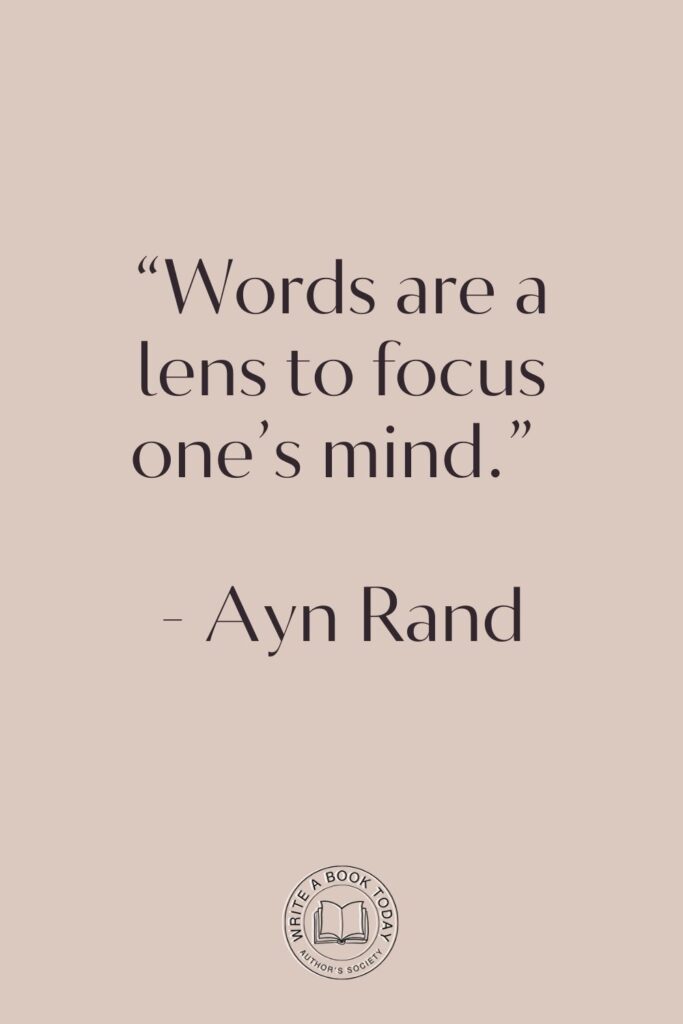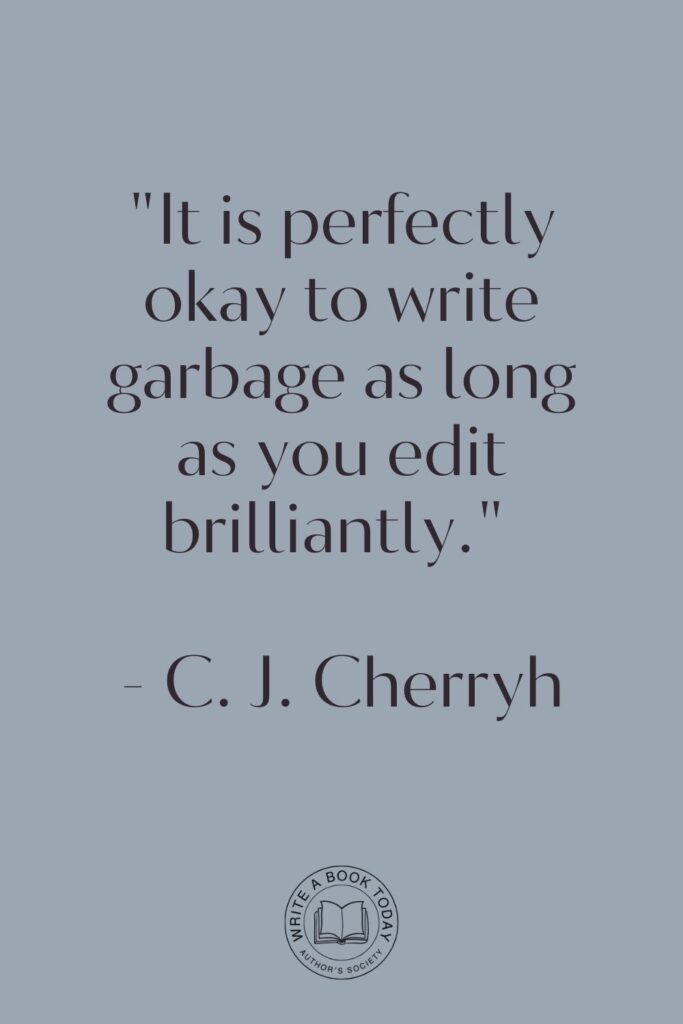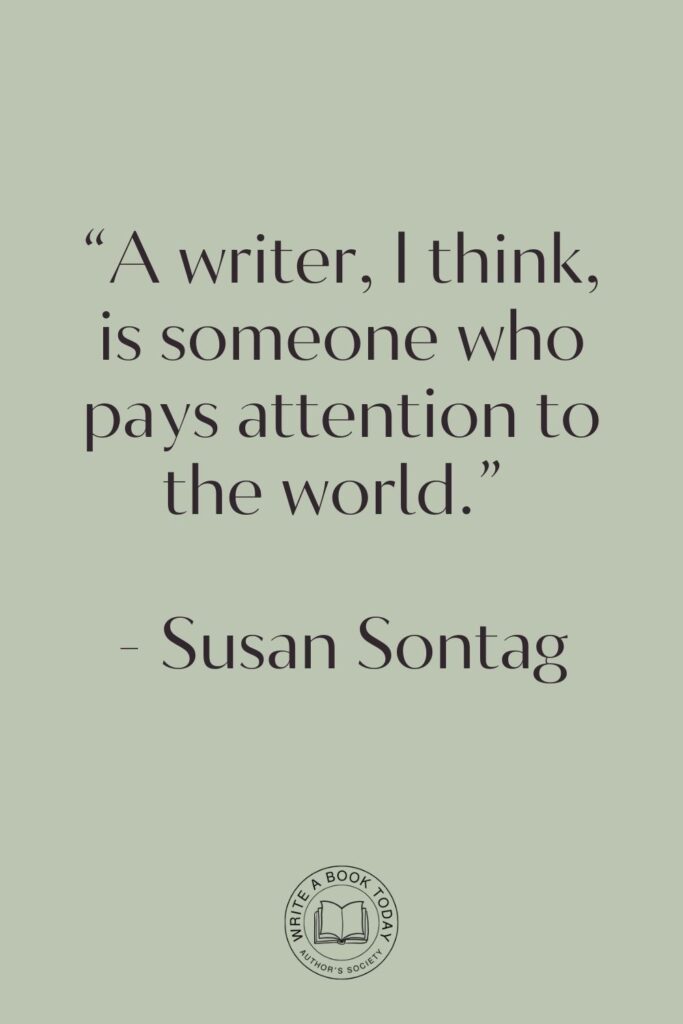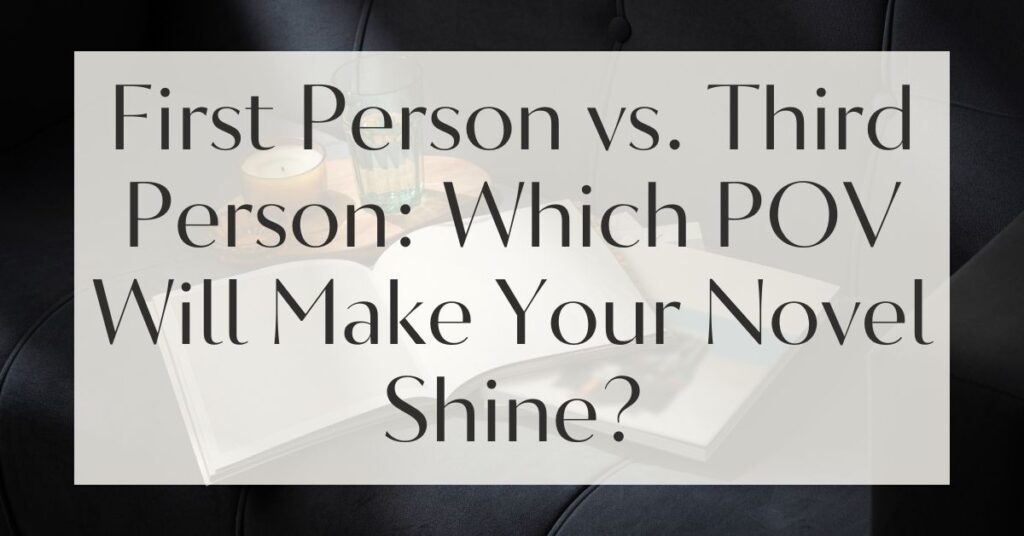Have you ever felt the magic of a story where the words seem to leap off the page, inviting you into a world so vivid and real that it feels like your own?
The secret ingredient to such enchanting storytelling often lies in the choice of point of view in writing. Whether you’re an aspiring novelist or a seasoned writer, understanding the nuances of first person vs third person can transform your narrative from ordinary to extraordinary.
This blog post will guide you through the intricacies of these perspectives, helping you discover which one might best illuminate your novel’s unique voice.
Understanding Point of View in Writing
The narrative perspective is more than just a technical choice; it’s the lens through which readers experience your story. It shapes their emotional connection to characters and events, much like choosing the right camera angle in a film.
To truly appreciate its impact, let’s delve into what point of view entails and why it’s pivotal in storytelling.
What is Point of View?
At its core, point of view determines who is telling the story and how much they know. In first-person narration, the story unfolds through the eyes of a character, using pronouns like “I” and “me.” This perspective offers an intimate glimpse into the character’s thoughts and emotions, creating a bond between them and the reader.
On the other hand, third-person narration uses “he,” “she,” or “they,” providing a broader overview of the story’s world. This perspective can range from limited, focusing on one character, to omniscient, offering insights into multiple characters’ minds.
Consider your story’s theme when choosing a POV. A first-person perspective might suit a deeply personal narrative, while third-person could work better for stories with multiple plotlines. Think about the emotional journey you want your readers to experience. Aligning the POV with your story’s emotional core can enhance its impact.
Importance of POV in Storytelling
The choice of POV is akin to selecting the perfect pair of glasses through which your readers will perceive the world you’ve crafted. It influences not only how the story is told but also how it’s received.
A well-chosen POV can heighten suspense, deepen character development, and shape the overall tone of the narrative. For instance, a first-person POV can immerse readers in the protagonist’s inner turmoil, while a third-person POV can provide a panoramic view of complex interwoven plots.

Exploring First Person Perspective
The first-person perspective is a powerful tool for writers aiming to create a direct and personal connection with readers. It’s like offering them a front-row seat to the character’s inner world, complete with all its vulnerabilities and triumphs.
Characteristics of First Person POV
Writing in the first person allows the narrator to share their subjective experience, often colored by their emotions and biases. This perspective can offer authenticity and immediacy, as readers are privy to the character’s thoughts and feelings in real time.
However, it also means the story is limited to what the narrator knows and perceives, which can add layers of mystery and intrigue.
First-person narratives often employ a conversational tone, making readers feel as though they’re listening to a trusted friend. This can be particularly effective in genres like memoirs or coming-of-age stories, where personal growth and introspection are central themes.
No marketing platform? No social following? No problem!
Publisher Rocket helps you market your debut novel like a pro.
It’s a gamechanger for debut authors – try it today!


Benefits of Writing in First Person
One of the most compelling benefits of first-person narration is its ability to foster deep emotional connections. Readers are drawn into the character’s psyche, experiencing their joys and sorrows firsthand. This perspective can also lend an air of authenticity, as it mirrors the way we naturally perceive our own lives—through a singular lens.
Use first-person POV to explore unreliable narrators. This can add depth and complexity to your story, as readers must decipher truth from perception. This technique can create suspense and keep readers engaged. It’s especially effective in mystery and psychological thriller genres.
Challenges of First Person POV
Despite its advantages, writing in the first person comes with its own set of challenges. The limited perspective can restrict the narrative’s scope, as readers only see what the narrator sees. This can make it difficult to convey events happening outside the narrator’s awareness, potentially leading to a narrow or biased view of the story.
Additionally, maintaining a consistent and authentic voice throughout the novel can be demanding. The narrator’s voice must remain distinct and believable, ensuring that their personality shines through without overshadowing the plot.
Diving into Third Person Perspective
The third-person perspective offers a versatile canvas for writers, allowing them to paint a broader picture of their story’s world. It’s akin to having a bird’s-eye view, where the narrative can soar above the landscape, taking in all its intricacies and details.

Characteristics of Third Person POV
Third-person narration can be either limited or omniscient. Limited third-person focuses on one character’s experiences, similar to first-person, but with the flexibility of using “he,” “she,” or “they.” Omniscient third-person, however, provides a god-like view, granting access to multiple characters’ thoughts and actions.
This perspective allows for a more expansive exploration of the story’s universe, offering insights into various characters and their motivations. It can seamlessly shift focus between scenes and subplots, providing a comprehensive understanding of the narrative’s fabric.
Benefits of Writing in Third Person
Third-person narration excels in delivering a balanced and objective account of the story. It can delve into the minds of multiple characters, offering readers a multifaceted view of the plot.
This perspective is particularly advantageous in complex stories with numerous characters and interwoven storylines.
Consider using third-person POV for epic tales. This perspective can capture the grandeur of expansive worlds and intricate plots. It allows for dynamic scene changes and character interactions. Ideal for fantasy, historical fiction, and multi-character dramas.
Challenges of Third Person POV
While third-person narration offers flexibility, it can also pose challenges. Balancing multiple characters’ voices and ensuring each one remains distinct can be demanding. Writers must avoid overwhelming readers with too much information, maintaining a coherent and engaging narrative.
Furthermore, the distance between readers and characters can sometimes hinder emotional connection. Without the intimate access of first-person narration, writers must skillfully craft scenes and dialogues to evoke empathy and investment.
Feeling lost with your debut novel?
Fiverr Pro connects you with expert editors, designers, and marketers – everything you need to get your book ready for success!

Comparing First Person vs Third Person
Choosing between first person and third person is not merely a technical decision; it’s a strategic one that can profoundly influence your novel’s impact. Each perspective brings its own strengths and challenges, and understanding these can help you determine which suits your story best.
Strengths of Each Perspective
First-person narration shines in its ability to create intimacy and immediacy, drawing readers directly into the character’s world. It’s ideal for stories centered on personal growth or psychological exploration.
Conversely, third-person narration excels in offering a panoramic view of the story’s landscape, making it perfect for complex narratives with multiple characters and subplots.
| First Person | Third Person |
|---|---|
| Intimate connection | Broader scope |
| Authentic voice | Multiple perspectives |
| Immediate experience | Objective overview |

When to Use Each POV
The choice of POV should align with your story’s goals and themes. If your narrative hinges on a single character’s internal journey, first-person may be the perfect fit. However, if your story involves a tapestry of interconnected lives, third-person might offer the flexibility needed to weave it all together.
Consider the emotional experience you wish to create for your readers. Do you want them to walk alongside your protagonist, feeling their every heartbeat? Or do you want them to witness the grand sweep of your story’s universe, gaining insights into multiple characters’ struggles and triumphs?
Character Development in Novels: The Role of POV
The point of view plays a crucial role in shaping character development, influencing how readers perceive and connect with the individuals populating your story. It can enhance character depth and foster empathy, making readers invested in their journeys.
How POV Influences Character Depth
In first-person narratives, the character’s inner thoughts and emotions are laid bare, offering readers a direct line to their psyche. This can lead to rich and nuanced character development, as readers witness their growth and transformation firsthand. However, this intimacy can also limit the exploration of other characters’ perspectives.
Third-person narration, especially omniscient, allows for a more comprehensive exploration of multiple characters’ arcs. It can delve into their motivations, conflicts, and relationships, providing a holistic view of the story’s dynamics. This perspective can reveal hidden layers and complexities, enriching the overall narrative.
Google Docs is for notes. Scrivener is for novels. Upgrade your writing game and try it for free today!

Creating Empathy Through Perspective
Empathy is a powerful tool in storytelling, and the choice of POV can significantly impact its effectiveness.
First-person narration can foster deep empathy by immersing readers in the character’s emotional world. They experience the protagonist’s joys and sorrows as if they were their own, forging a strong emotional bond.
In contrast, third-person narration can evoke empathy by offering diverse perspectives. Readers gain insight into multiple characters’ struggles and triumphs, understanding their motivations and challenges. This broader view can create a tapestry of empathy, weaving connections between seemingly disparate lives.
Tips for Choosing the Right POV for Your Novel
Selecting the perfect POV for your novel requires careful consideration of your story’s needs and creative vision. Here are some tips to guide you in making this important decision.
Reflecting on Your Story’s Needs
Start by reflecting on the essence of your story. What themes do you want to explore, and what emotional journey do you wish to take your readers on?
Consider how different POVs can enhance or detract from these elements. Aligning your POV with your story’s core can create a harmonious and impactful narrative.
Think about your protagonist’s voice. Does it resonate strongly enough to carry a first-person narrative? Or would a third-person perspective allow for richer storytelling? Consider writing a scene in both POVs to see which feels more authentic. Trust your instincts and the needs of your story.

Experimenting with Different Perspectives
Don’t be afraid to experiment with different POVs during the drafting process. Try writing scenes from both first-person and third-person perspectives to see which one captures the essence of your story.
This experimentation can provide valuable insights and help you discover the most effective way to tell your tale.
Remember that the choice of POV is not set in stone. As your story evolves, you may find that a different perspective better serves your narrative goals. Embrace the flexibility of storytelling and be open to adapting your approach as needed.
Embracing the Creative Possibilities of POV
The beauty of storytelling lies in its boundless creativity, and the choice of POV is a testament to this. By exploring different perspectives, you can unlock new dimensions of your narrative and create a story that resonates with readers on multiple levels.
Personal Anecdotes from Successful Authors
Many successful authors have shared their experiences with choosing POV, offering valuable insights into their creative processes. For instance, acclaimed novelist Jane Doe once revealed how switching from third-person to first-person transformed her story, bringing her protagonist’s voice to life in unexpected ways. These anecdotes serve as reminders of the transformative power of POV in storytelling.
Encouraging Community Discussion on POV Choices
Storytelling is a communal art form, and discussing POV choices with fellow writers can be incredibly enriching. Engage with writing communities, both online and offline, to share your experiences and learn from others. These discussions can spark new ideas and inspire you to experiment with different perspectives in your own work.
Ultimately, the choice between first person vs third person is a deeply personal one, guided by your story’s unique needs and your creative vision. Embrace the journey of exploration, and let the power of POV illuminate the path to your novel’s brilliance.








